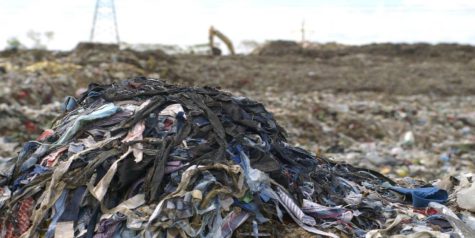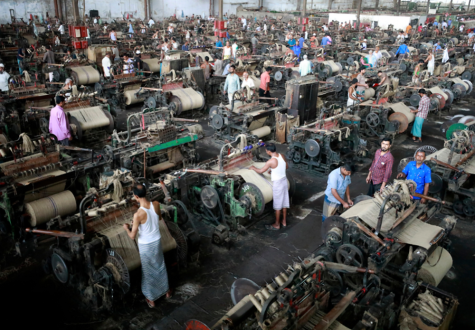Fast Fashion: An Environmental Crisis with the US at its Center
January 13, 2022
It’s no secret that the world is warming up at an exponential rate. While some people tend to blame things like plastic water bottles and straws for our negative disposition, it’s hard to overlook the industry. For years, many companies have been exploiting the environment for their cause by purposefully dumping toxic chemicals into our water bodies and air to produce factory-made items- the same goes for large corporations dumping their waste as well.
However, one important aspect of the climate crisis that the US is inherently the largest perpetrator of isn’t even fossil fuel burning, but fast fashion. The supply chain is essentially one long complicated strung out loop, however, fast fashion is a specific business model that is used by major retail brands that focus on mass-producing certain clothing styles to keep up with the rapid changes in large and micro trends. That’s right, those cool patchwork jeans you thought were in two months ago that had every company hanging up a new pair to sell are now out of style, so they are now out of the stores, and where have they ended up you may ask? Maybe the donation bins, but also landfills.

The fast-fashion crisis is unarguably linked to our society’s obsession with consumerism and fulfilling trends. Some of the worst companies locked into this cycle are Zara, Shein, Top Shop, Forever 21, and H&M which has generated the highest revenue with over 25 billion dollars for their efforts. The large issue is that creating such an amount of clothes so quickly impacts the environment and factory workers tremendously. Fast fashion currently contributes to over 10% of all of humanity’s carbon emissions. Making one pair of jeans alone emits the same amount of CO2 emissions as driving a car for 80 MILES. This single industry alone is responsible for over 1,715 million tonnes of carbon emissions annually, and that doesn’t even factor in the shipping that they require. Water waste is also incredibly high with roughly 79 billion cubic mL of water being used per annum. Many of the actual processing takes place in industries outside of the United States such as China, India, and Ghana, however, the US still
leads in purchasing and hence being one of the largest contributors to the growing issue.
Apart from the environmental issue, there is also the human rights aspect to look at this from. There are roughly 40 million garment workers worldwide, 80% of them being women. Workers in these positions are often subjected to extremely unsafe working conditions and chemical exposure and are criminally underpaid. Living on a “piece wage system” most only make about $3 a day on average. Not to mention, on top of the poor pay, workers are being exploited as many are forced to work 14+ hour shifts in exchange for respiratory illnesses and potentially cancer. It is not enough for clothing brands to label themselves “sustainable”, they must also be ethical in their work practices.

You may think you’re safe if you donate your unwanted tops and pants instead, but as studies reveal, the quality of these fast fashion garments is often too poor to upcycle, and therefore, what is not bought at your local thrift store ends up in the same landfill with the people who just dumped the clothes they didn’t want anymore into the trash. The point of the matter is that if we want to make a change, donation, while appreciated, isn’t necessarily the solution, a slow in consumerism although, could be.
However, despite the clear adverse effects, a central argument still resides in cost. Many point out that fast fashion items, unfortunately, come at a cheaper cost because they are mass-produced, but let’s make one thing clear: websites like Shein and Forever 21 are never going to stop existing or negatively impacting the environment, but we have to realize it is not the poor people ordering a few garments that are responsible for the issue here, it is the ones who make money and are still choosing to buy in excess from these companies when they have the access to more sustainable clothing. Especially when engaging in micro trends to fit in. If the clothes will not be of any interest to you in the future, then don’t buy them. The less we as a society buy into excessive consumerism, the less the companies will inevitably produce over time.



